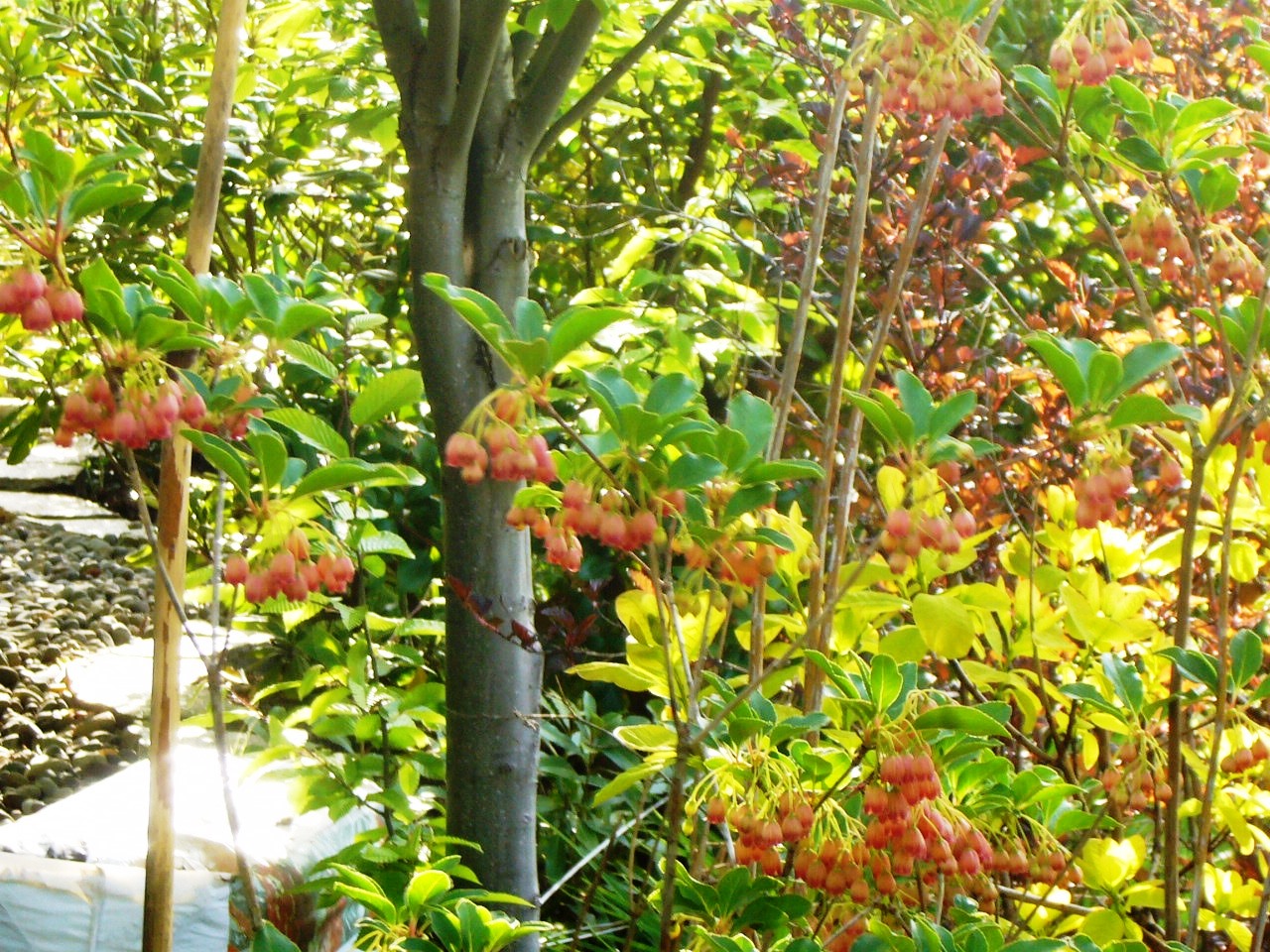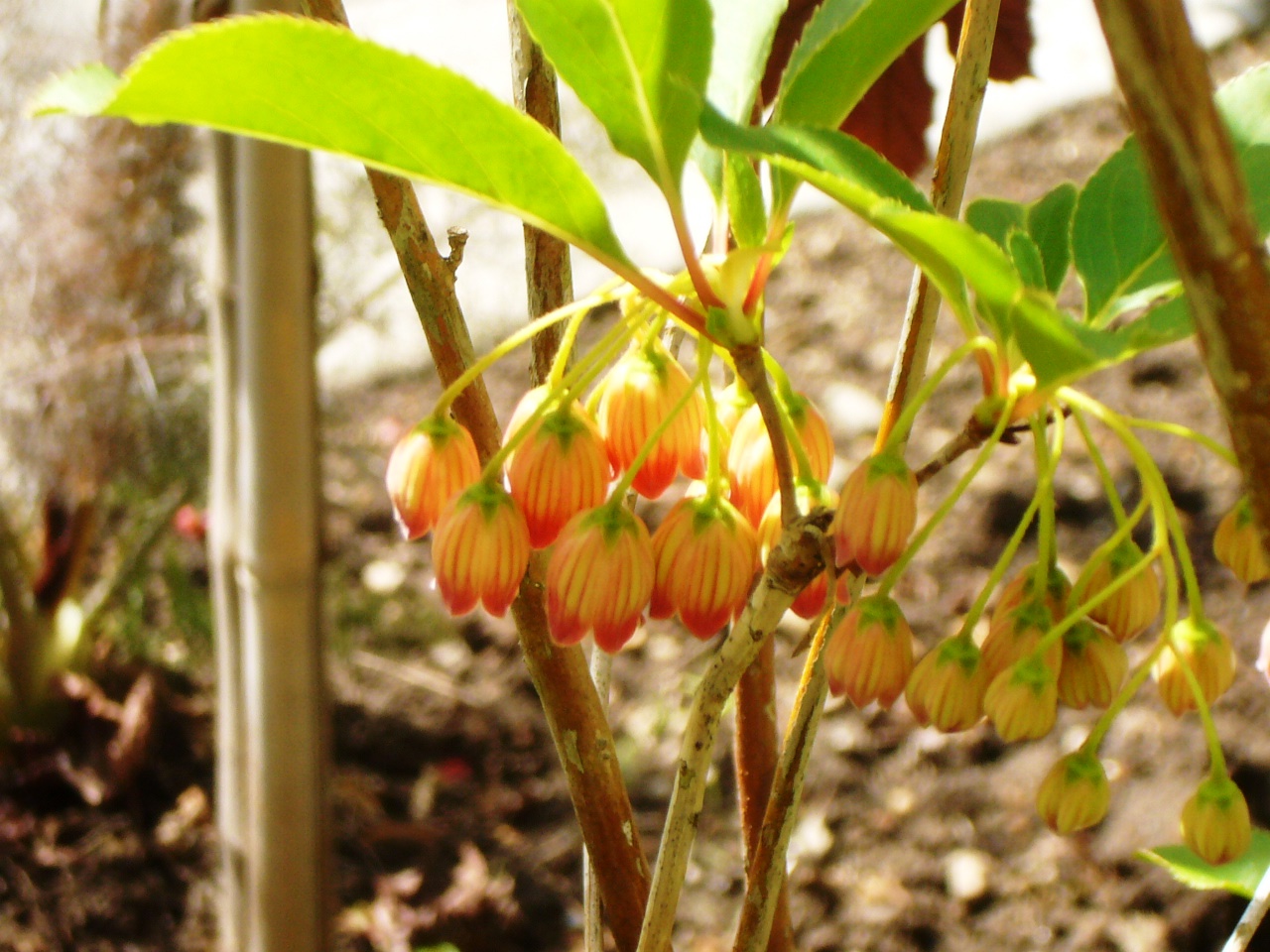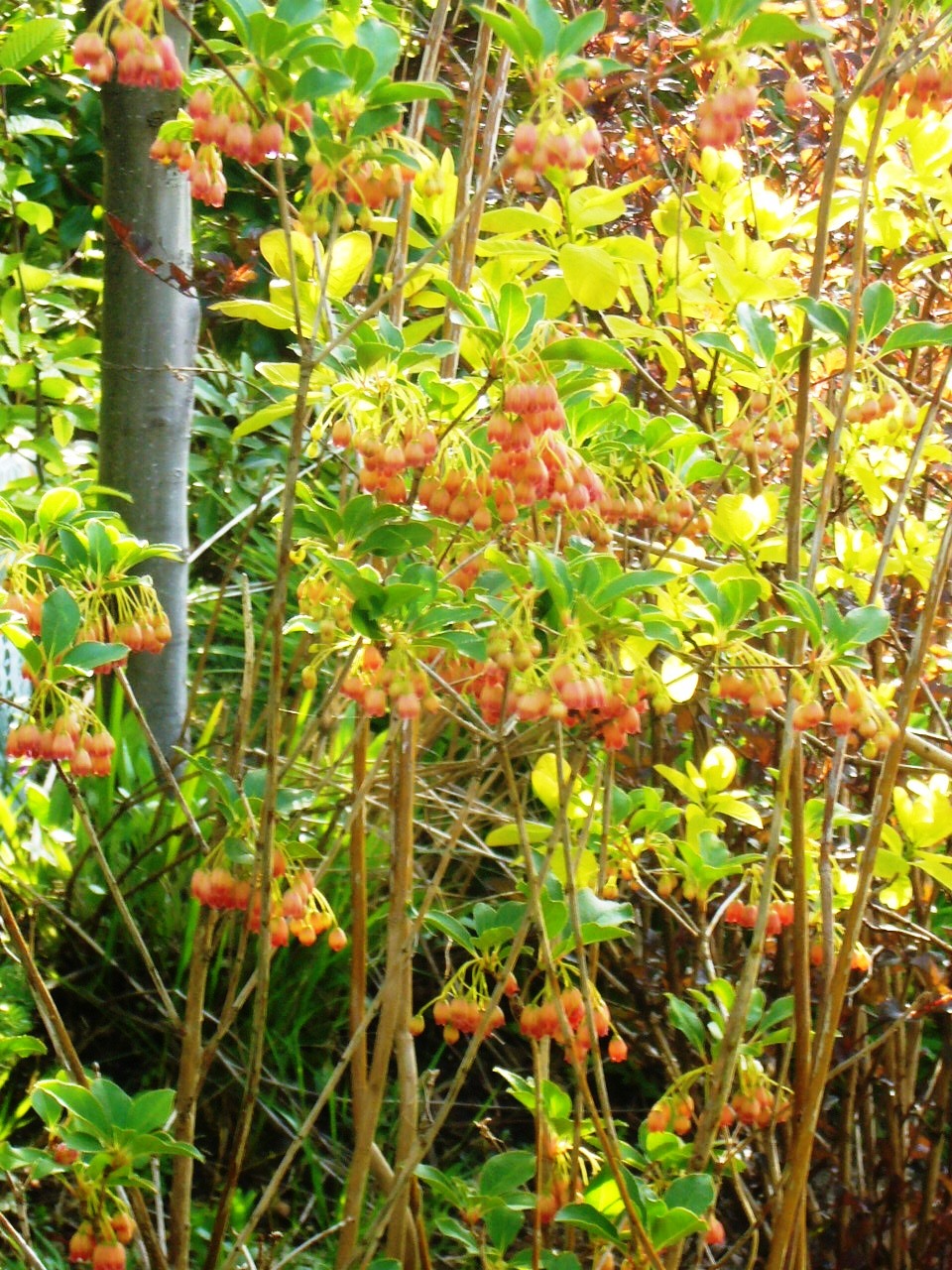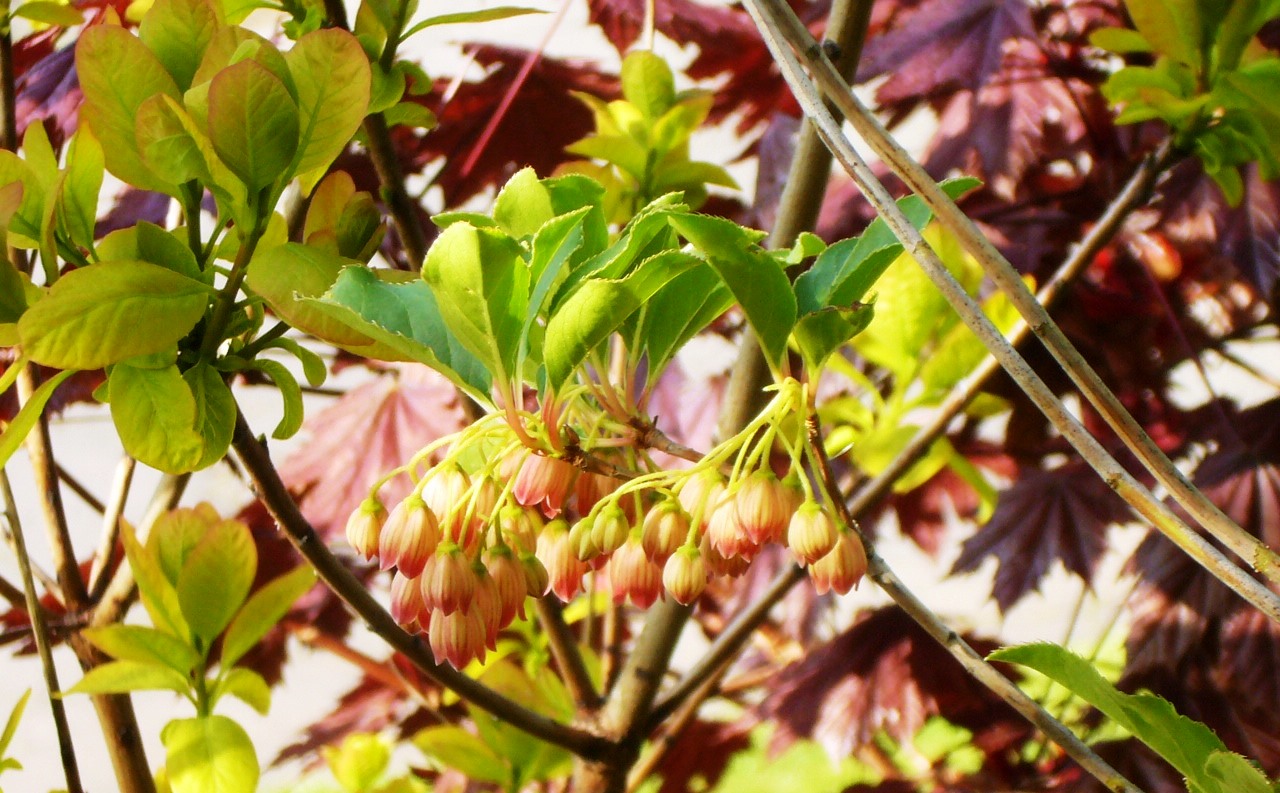Enkianthus campanulata “Red Bells”
Enkianthus campanulata “Red Bells” is an elegant choice for the Pacific Northwest garden. Although a garden needs to have some evergreens around in the winter, deciduous shrubs and trees are an important part of the magic as well. One of the amazing things about the garden, especially those perennials that you cut down each year as well as deciduous plants, is that what was yin suddenly turns yang. What seemed dead is alive. You can see the chi expanding. Then, in the fall, deciduous trees and shrubs go from yang to yin and seem to disappear into the landscape. What was alive seems dead. If you observe carefully you can actually see the plants and trees seeming to contract, even before the leaves change color and fall from the branches.
The name enkianthus comes from the Greek words enkuos (pregnant) and anthos (flowers). The plump little flower bells show up near Easter time when we are all thinking about the eternal return in some way or another. Come to think of it, they look like little Easter eggs. It’s impossible to overlook the fertility symbolism of all the spring and early summer flowers. Think about peonies – they’re coming on now.
In the Seattle area Red Bells starts blooming mid-to-late April. If you plant enkianthus in a somewhat sheltered spot you may find there are still fading blooms in early June. This is a shrub that would like a little shade and doesn’t want to get too dry. It’s a slow growing deciduous shrub that will take about 15 years to reach its mature size of 3 feet wide by 6 feet tall.
Enkianthus has an open, layered, somewhat columnar aspect. Its leaves will turn red in the fall. It does not require much pruning if any. It doesn’t look good when pruned and I would recommend planting it where it can slowly grow into the space. Everything about its aspect suggests to me that it would be a good choice for planting the Tiger side of your garden.
Enkianthus is related to the evergreens rhododendron and pieris japonica and makes a nice pairing with them as it will flourish in the same conditions as they do. Mine is currently located near a Crimson Sentry Norway Maple and a green smoke bush – I think it’s called Golden Spirit. In terms of aesthetics it makes a great contrast and really brings out the subtle colorings of the enkianthus, but in terms of what the enkianthus needs it’s not quite the right place.
I know from past years thats it’s more exposed to sun than it should be so I’ll move it to a dappled sun/shady area where I just removed a deceased flowering currant bush. I expect this summer to be very hot and I don’t think it will prosper where it is. I’m moving quite a few plants right now. Time to get back out there and work so I can take advantage of all the free water coming down from the sky.




